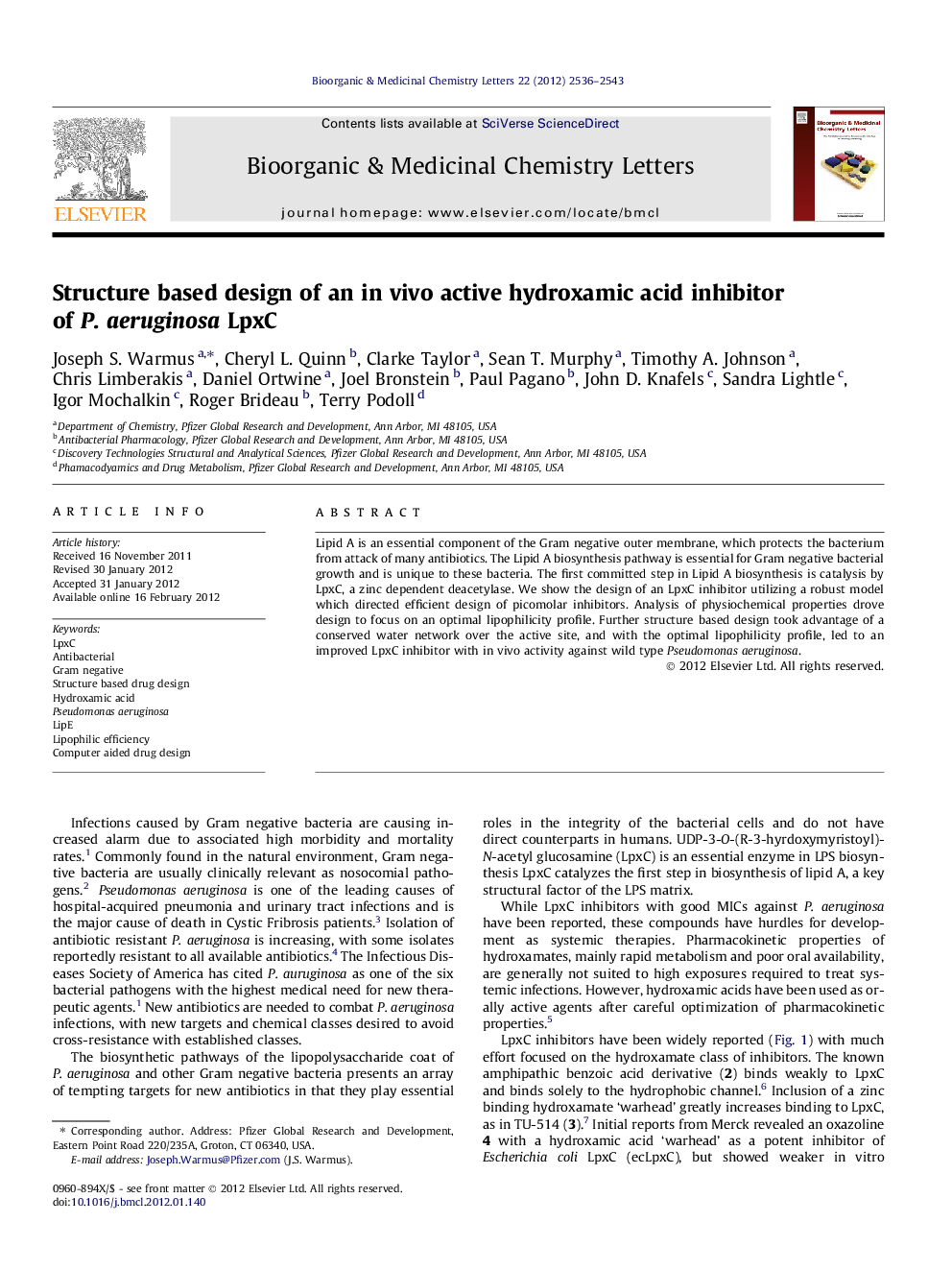| کد مقاله | کد نشریه | سال انتشار | مقاله انگلیسی | نسخه تمام متن |
|---|---|---|---|---|
| 1369968 | 981799 | 2012 | 8 صفحه PDF | دانلود رایگان |

Lipid A is an essential component of the Gram negative outer membrane, which protects the bacterium from attack of many antibiotics. The Lipid A biosynthesis pathway is essential for Gram negative bacterial growth and is unique to these bacteria. The first committed step in Lipid A biosynthesis is catalysis by LpxC, a zinc dependent deacetylase. We show the design of an LpxC inhibitor utilizing a robust model which directed efficient design of picomolar inhibitors. Analysis of physiochemical properties drove design to focus on an optimal lipophilicity profile. Further structure based design took advantage of a conserved water network over the active site, and with the optimal lipophilicity profile, led to an improved LpxC inhibitor with in vivo activity against wild type Pseudomonas aeruginosa.
A series of biphenyl hydroxamic acid LpxC inhibitors were optimized using structure-based design along with physicochemical optimization to produce picomolar inhibitors with low MICs. One of these picomolar inhibitors showed in vivo activity against wild type Pseudomonas aeruginosa.Figure optionsDownload as PowerPoint slide
Journal: Bioorganic & Medicinal Chemistry Letters - Volume 22, Issue 7, 1 April 2012, Pages 2536–2543